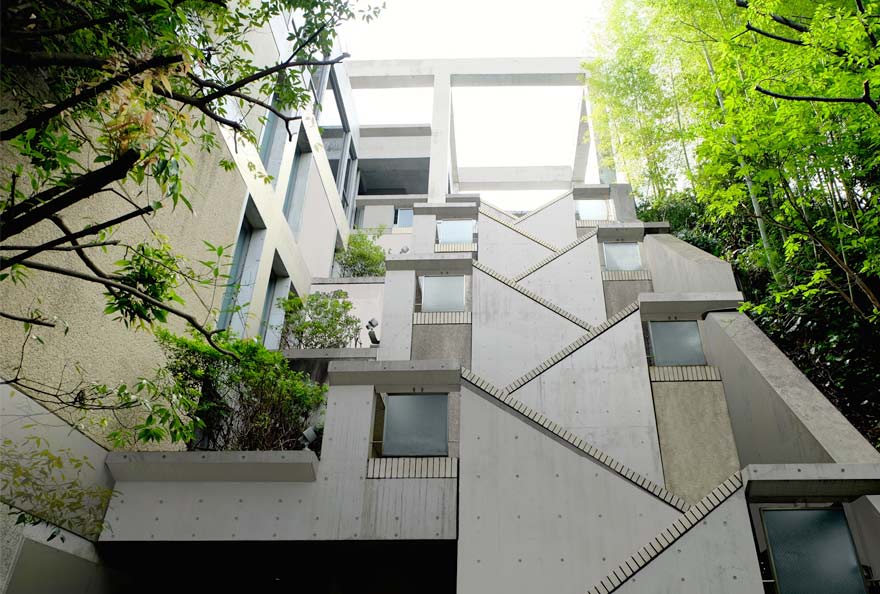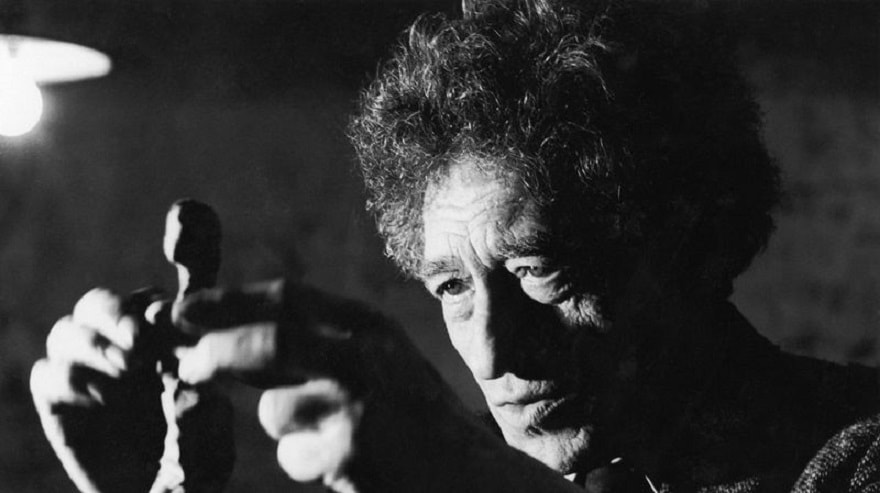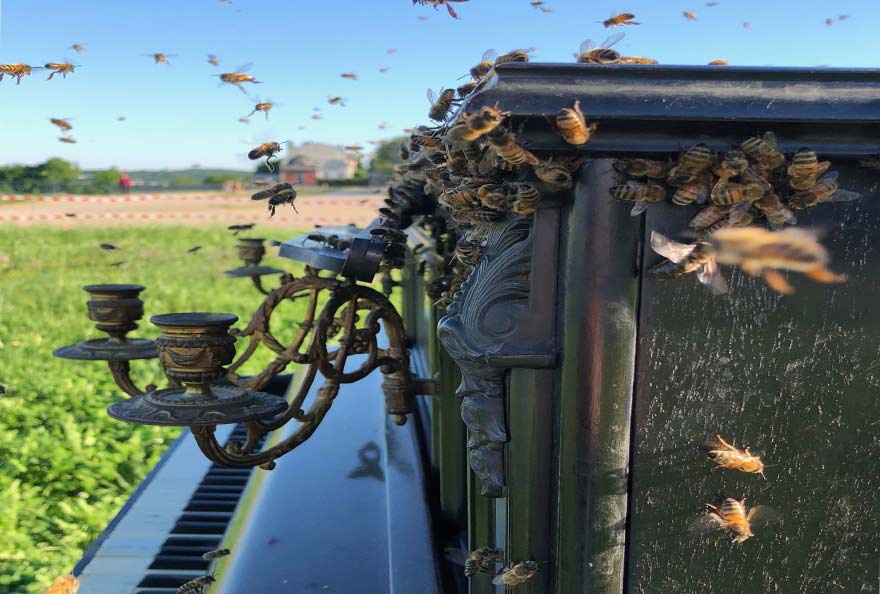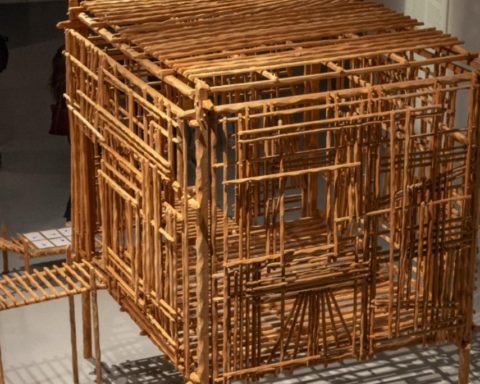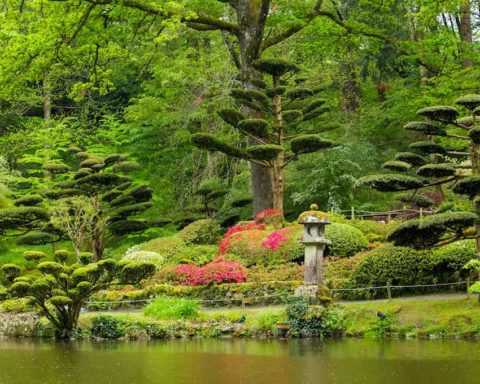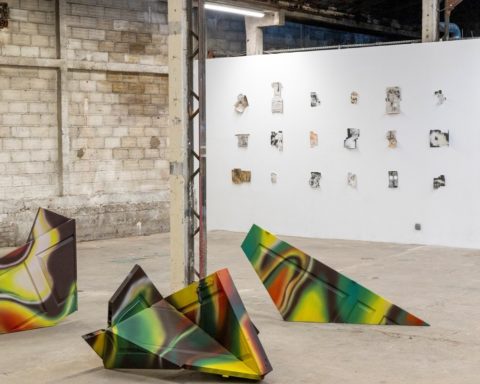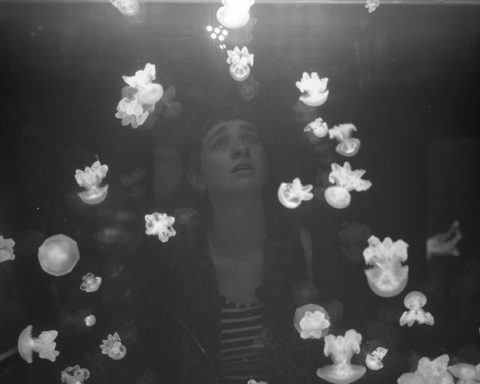While the French Institute has just unveiled, on June 18th, the 20 artists selected to go in residence for 2 to 6 months at the Villa Kujoyama in Kyoto in 2019, the Bettencourt Schueller Foundation announces its commitment to a vast three-year support plan (2019 - 2021) in favour of the Villa. The Foundation will thus accompany the second phase of the renovation and upgrading of the spaces, finance cultural activities, logistical support during and after the residencies and communication, as well as the operating costs of the Villa and the remuneration of the teams.
Dince the creation of the Académie de France in Rome by Colbert in 1666, France has supported artistic outreach by encouraging its creators to immerse themselves in foreign cultures in order to understand and be inspired by them. It was in this same spirit that, much later, the creation of the
Casa de Velázquez in 1920 and Villa Kujoyama in 1992, enriched the experience of living in contact with the Italian Renaissance by offering the prospect of a change of scenery towards the Iberian Peninsula and the Far East.
But today, at the beginning of the 21st century, why do artists still choose to travel to these destinations often perceived as the symbol of the Academy, classicism or tropism of the Empire of Signs? What does an artist in residence in Madrid, Rome or Kyoto do? Free today from all exoticism, does this change of scenery still make sense in a globalized world where artists travel from a museum in Shanghai to a biennale in St. Petersburg or Rio de Janeiro? Globalization, through the internationalization of the art world, is one of the most current dimensions and the usefulness of these residencies abroad. How does the artist apprehend his immersion in a new country, a new culture, a new language? How does his discovery of new models or contact with other artists translate into his work? What place do the encounters he makes there, the opening to shared work in a radically new environment or the experience of collective life that a "residency" means by definition, occupy in his reflection and more broadly in his creative journey? How does his practice adapt to new references and a new environment?
Casa de Velázquez in 1920 and Villa Kujoyama in 1992, enriched the experience of living in contact with the Italian Renaissance by offering the prospect of a change of scenery towards the Iberian Peninsula and the Far East.
But today, at the beginning of the 21st century, why do artists still choose to travel to these destinations often perceived as the symbol of the Academy, classicism or tropism of the Empire of Signs? What does an artist in residence in Madrid, Rome or Kyoto do? Free today from all exoticism, does this change of scenery still make sense in a globalized world where artists travel from a museum in Shanghai to a biennale in St. Petersburg or Rio de Janeiro? Globalization, through the internationalization of the art world, is one of the most current dimensions and the usefulness of these residencies abroad. How does the artist apprehend his immersion in a new country, a new culture, a new language? How does his discovery of new models or contact with other artists translate into his work? What place do the encounters he makes there, the opening to shared work in a radically new environment or the experience of collective life that a "residency" means by definition, occupy in his reflection and more broadly in his creative journey? How does his practice adapt to new references and a new environment?
Research or creative work, without obligation of result, facilitated by the provision of a place to live and create, financial, technical and human means, with the notion of sharing and exchange: this is the objective of an artistic work in residence. It is essential because it appears as one of the possible answers to the artists' lack of means, but above all as an intellectual springboard made of sharing and exchange... Rationalisation can be a motivation in itself, and is often encouraged by institutional partners.
Accompaniment such as the one set up by the Bettencourt Schueller Foundation in 2014 for the reopening of the Villa Kujoyama, which notably allowed for the introduction of a new programme of residencies open to the arts and crafts.
The objective today is to strengthen the positioning of the Villa's programme of residencies of excellence, to increase the synergies between contemporary creation and arts and crafts, and to extend the reputation of Villa Kujoyama internationally.
This announcement comes at a time when a series of large-scale cultural events on the theme "Japonismes 2018: souls in resonance" has just been launched by the Japan Foundation on the occasion of the 160th anniversary of diplomatic relations between France and Japan in 2018.
Kyoto has become a booming centre for contemporary art: Former imperial capital and symbol of traditional Japan, Kyoto is evolving, notably with the installation of the Cultural Affairs Agency of the Ministry of Culture this year and numerous artistic events.
Villa Kujoyama, a unique residence
The construction of Villa Kujoyama was decided in 1926 by Paul Claudel, then French Ambassador to Japan, and was completed in 1992 by the architect Kunio Kato on Higashiyama Mountain in Kyoto. The Villa, piloted by Charlotte Fouchet-Ishiiest, is today under the supervision of the French Institute and the French Institute of Japan, with the support of the Bettencourt-Schueller Foundation, its main sponsor. It is a place for interdisciplinary exchanges aimed at strengthening intercultural dialogue between France and Japan.
Villa Kujoyama is one of the most prestigious French residency programs abroad along with Villa Medici in Rome and Casa de Velazquez in Madrid. It is the only French residency for creators in Asia and the first one open to the arts and crafts. A tool for interdisciplinary exchanges, it is a label of excellence through the 317 creators who have stayed there (60 residents since its reopening in 2014, including 10 craftsmen and women). It has notably welcomed the gilder Manuela Paul-Cavallier, the writer Emmanuel Carrère, the designers Felipe Ribon and François Azambourg, the jeweller Karl Mazlo, the artist Olivier Sévère, the plumassière Nelly Saunier, the designer of wallpaper printed with a board François-Xavier Richard...
Hoisted on the Yamashina mountain away from the city centre without being really isolated, the Villa constitutes a place of retreat, as it was designed by the architect Kunio Kato who accentuated this monastic destination by orienting the windows of the studios towards the mountain wall. This decision, which sacrifices the view to his vision, helps to create an extraordinary setting and situation, conducive to concentration and daydreaming. […]Staying at the Villa is an unforgettable experience. It is like entering a monastery, with a particular, neutral temporality, situated between East and West, which produces a disposition of mind and body. »Anne Bonnin, art critic, and Thomas Clerc, writer
Interdisciplinarity, cultural confrontation and support are offered to French and Japanese designers in this prestigious futuristic architectural nest.
Villa Kujoyama invites its residents to develop working relationships with the professional, academic, artistic and cultural communities of Kyoto, the Kansai region and the entire archipelago. To do so, they can rely on the Villa's team and on the French cultural network in Japan, which, together with the Villa, consists of five branches of the French Institute of Japan (Fukuoka, Kyoto, Osaka, Tokyo, Yokohama), four Alliances françaises (Nagoya, Sapporo, Sendai, Tokushima), and a Research Institute (Tokyo).
Residents 2019
The Villa Kujoyama's final selection committee chose 17 projects by twenty artists and creators selected for their excellence in their respective disciplines. They will be in residence in Kyoto for 2 to 6 months in 2019:
- Benjamin Aubry - Architecture
- André Baldinger - Design / Graphics
- Benjamin Bertrand - Dance
- Hugo Capron - Fine Arts
- Annie Claustres - Exhibition curator
- Marion Delarue - Arts and Crafts
- Mimosa Echard - Fine Arts
- Christophe Galati - Digital Productions
- Isabelle Le Minh - Photography
- Simon Moers and Tomoe Kobayashi (duet) - Street arts, circus, puppetry
- Luz Moreno and Anaïs Silvestro (pair) - Gastronomy
- Camille Mutel - Dance
- Rithy Panh - Cinema
- Laurel Parker and Paul Chamard (duo) - Arts and crafts
- Daniel Pescio - Fashion
- Samy Rio - Design / Graphics
- Arnaud Rykner - Book
"Let's give wings to talent"
The Bettencourt Schueller Foundation, the Villa's main partner since 2014, has opened a residence dedicated to the arts and crafts. The Liliane-Bettencourt Prize for the Intelligence of the Hand has already been awarded to 100 winners. The Foundation, which aims to "give wings to talent" (60 million euros of support in 2017), also invests in the field of life sciences, solidarity and education. Since its creation at the end of the 1980s, it has supported 1,600 projects led by various teams, associations, institutions and organizations, including 544 winners.
The Foundation thus devotes its time and energy to choosing, supporting and promoting people who are imagining tomorrow's world today, in three areas that contribute concretely to the common good: life sciences, the arts and solidarity.
True to its philanthropic spirit, it awards prizes and supports projects through donations and highly personalized support.

Anything to add? Say it as a comment.

